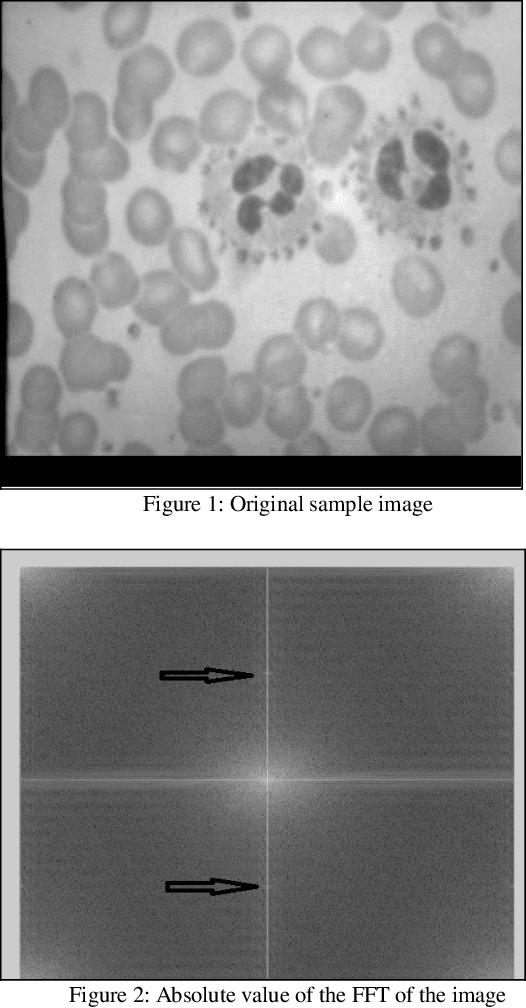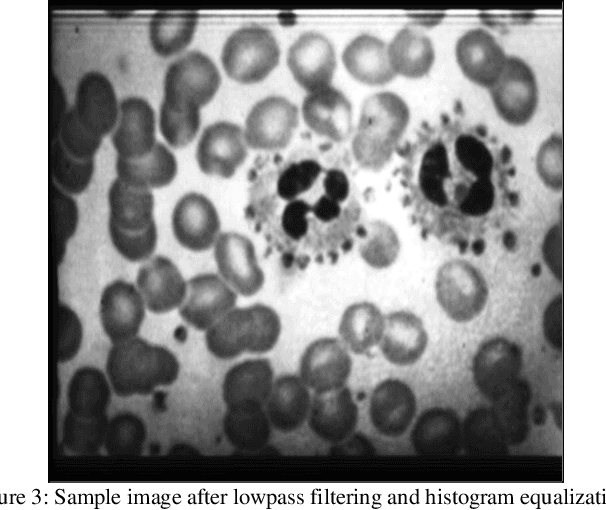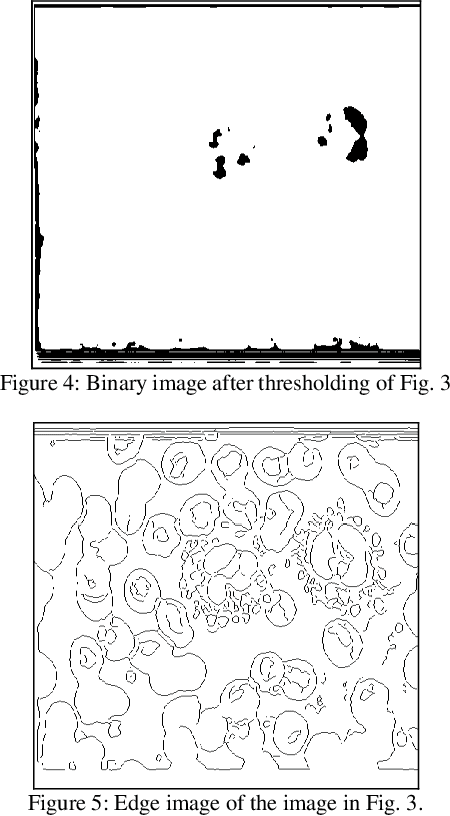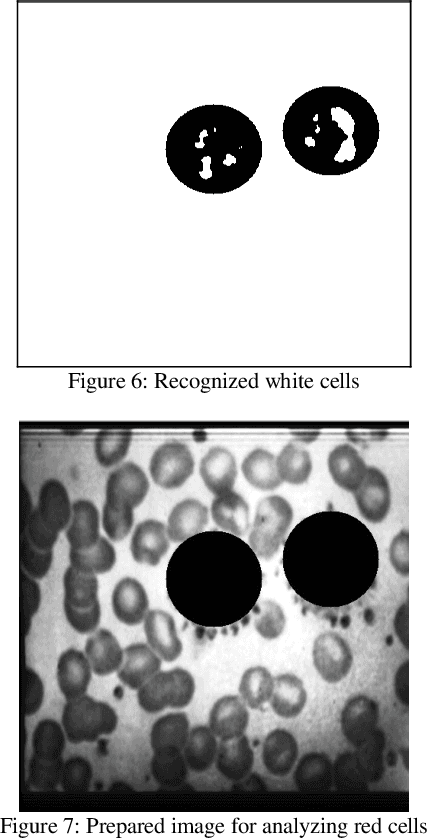Hamed Sadeghi
A fast semi-automatic method for classification and counting the number and types of blood cells in an image
Apr 18, 2020



Abstract:A novel and fast semi-automatic method for segmentation, locating and counting blood cells in an image is proposed. In this method, thresholding is used to separate the nucleus from the other parts. We also use Hough transform for circles to locate the center of white cells. Locating and counting of red cells is performed using template matching. We make use of finding local maxima, labeling and mean value computation in order to shrink the areas obtained after applying Hough transform or template matching, to a single pixel as representative of location of each region. The proposed method is very fast and computes the number and location of white cells accurately. It is also capable of locating and counting the red cells with a small error.
Diabetes Mellitus Forecasting Using Population Health Data in Ontario, Canada
Apr 08, 2019



Abstract:Leveraging health administrative data (HAD) datasets for predicting the risk of chronic diseases including diabetes has gained a lot of attention in the machine learning community recently. In this paper, we use the largest health records datasets of patients in Ontario,Canada. Provided by the Institute of Clinical Evaluative Sciences (ICES), this database is age, gender and ethnicity-diverse. The datasets include demographics, lab measurements,drug benefits, healthcare system interactions, ambulatory and hospitalizations records. We perform one of the first large-scale machine learning studies with this data to study the task of predicting diabetes in a range of 1-10 years ahead, which requires no additional screening of individuals.In the best setup, we reach a test AUC of 80.3 with a single-model trained on an observation window of 5 years with a one-year buffer using all datasets. A subset of top 15 features alone (out of a total of 963) could provide a test AUC of 79.1. In this paper, we provide extensive machine learning model performance and feature contribution analysis, which enables us to narrow down to the most important features useful for diabetes forecasting. Examples include chronic conditions such as asthma and hypertension, lab results, diagnostic codes in insurance claims, age and geographical information.
SALSA-TEXT : self attentive latent space based adversarial text generation
Oct 08, 2018



Abstract:Inspired by the success of self attention mechanism and Transformer architecture in sequence transduction and image generation applications, we propose novel self attention-based architectures to improve the performance of adversarial latent code- based schemes in text generation. Adversarial latent code-based text generation has recently gained a lot of attention due to their promising results. In this paper, we take a step to fortify the architectures used in these setups, specifically AAE and ARAE. We benchmark two latent code-based methods (AAE and ARAE) designed based on adversarial setups. In our experiments, the Google sentence compression dataset is utilized to compare our method with these methods using various objective and subjective measures. The experiments demonstrate the proposed (self) attention-based models outperform the state-of-the-art in adversarial code-based text generation.
OCRAPOSE II: An OCR-based indoor positioning system using mobile phone images
Apr 19, 2017



Abstract:In this paper, we propose an OCR (optical character recognition)-based localization system called OCRAPOSE II, which is applicable in a number of indoor scenarios including office buildings, parkings, airports, grocery stores, etc. In these scenarios, characters (i.e. texts or numbers) can be used as suitable distinctive landmarks for localization. The proposed system takes advantage of OCR to read these characters in the query still images and provides a rough location estimate using a floor plan. Then, it finds depth and angle-of-view of the query using the information provided by the OCR engine in order to refine the location estimate. We derive novel formulas for the query angle-of-view and depth estimation using image line segments and the OCR box information. We demonstrate the applicability and effectiveness of the proposed system through experiments in indoor scenarios. It is shown that our system demonstrates better performance compared to the state-of-the-art benchmarks in terms of location recognition rate and average localization error specially under sparse database condition.
 Add to Chrome
Add to Chrome Add to Firefox
Add to Firefox Add to Edge
Add to Edge